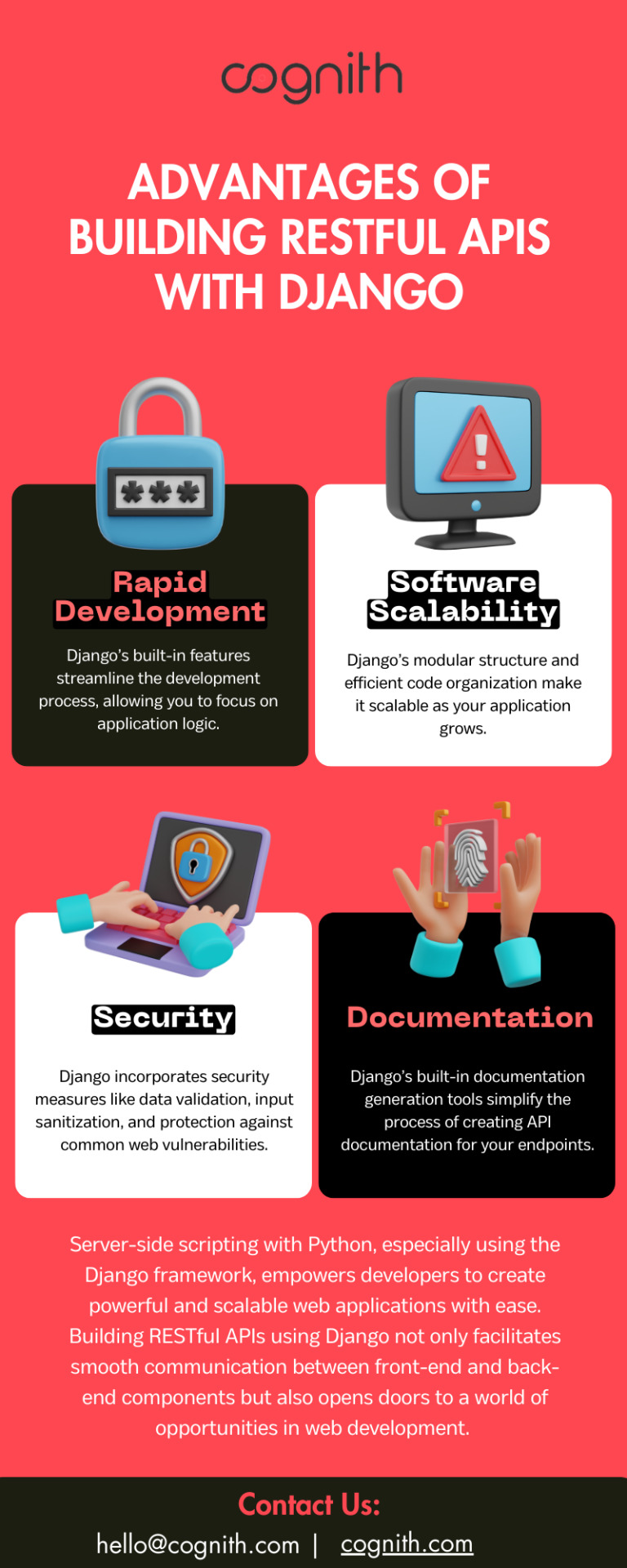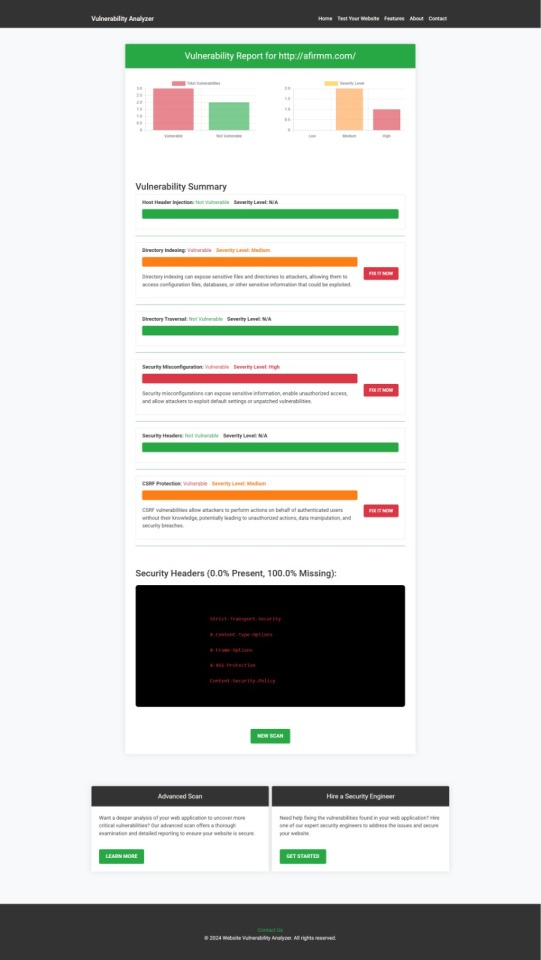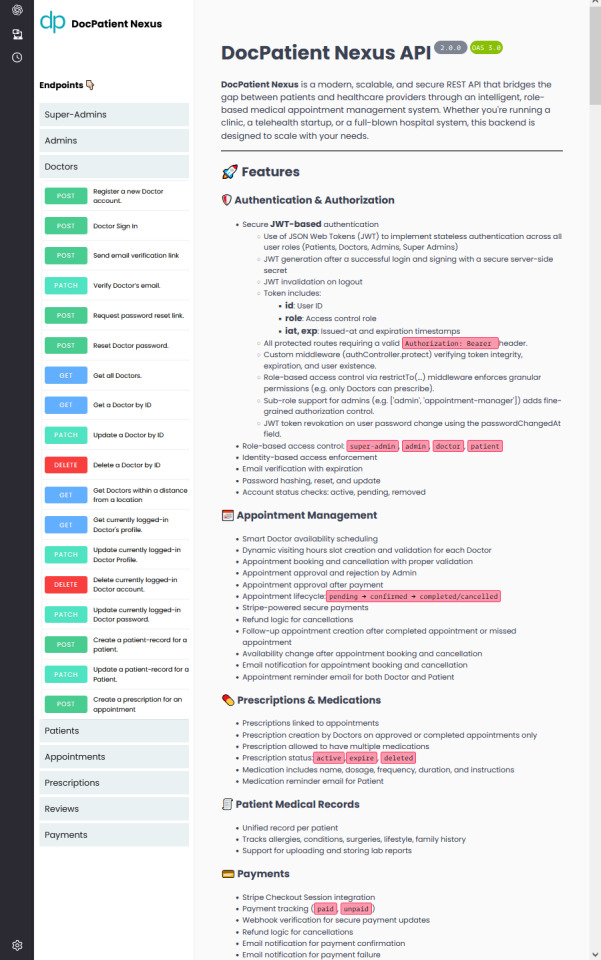#* RESTful APIs
Explore tagged Tumblr posts
Text

Server-Side Scripting Explained: Simplifying Web Development
Explore how server-side scripting works, from processing user requests to delivering customized content. Learn the benefits for both developers and users.
0 notes
Text
REST APIs
REST (Representational State Transfer) is a type of API where all the information needed to perform an action is passed to the API at the time the request needs fulfilling. The server does not need previous knowledge of the clients session in order to fulfill their request.
The alternative to this is that the client having a 'session' with the server, where the server keeps information on the client while it's active, which can take up a lot of server processing power and memory. For large services handling possible hundreds of thousands of clients at a time, keeping a 'connection' can take up a lot of server processing and memory.
REST speeds up processing time for both the server and client. With sessions, they can end up split over multiple servers, meaning servers have to communicate to get data which can slow down response time. Because the server needs no prior knowledge of a client, any client can handle any client's request easily, which also makes load balancing easier, a request can be sent to any server that can handle it which is currently the least busy.
All REST APIs use HTTP methods. A client sends a request via HTTP to a specific endpoint (location on the web), along with all of the information needed to complete that request. The server will then process it and send back a response.
Core features of REST:
Client-Server Architecture - a client that sends requests to a server, or set of servers via HTTP methods.
Stateless - client information is not stored between requests and each request is handled as separate and unconnected.
Cacheability - data that is expected to be accessed often can be cached (saved for a set amount of time) on the client or server side to make client and server interactions quicker.
Uniform interface - no matter where an endpoint is accessed from, its requests have a standard format. Information returned to a client should have enough information and self description that the client knows how to process it.
Layered system architecture - calls and responses can go through multiple intermediate layers, but both the client and server will assume they're communicating directly.
Code on demand (optional) - the server can send executable code to the client when requested to extend client functionality.
5 notes
·
View notes
Text
SQL Injection in RESTful APIs: Identify and Prevent Vulnerabilities
SQL Injection (SQLi) in RESTful APIs: What You Need to Know
RESTful APIs are crucial for modern applications, enabling seamless communication between systems. However, this convenience comes with risks, one of the most common being SQL Injection (SQLi). In this blog, we’ll explore what SQLi is, its impact on APIs, and how to prevent it, complete with a practical coding example to bolster your understanding.

What Is SQL Injection?
SQL Injection is a cyberattack where an attacker injects malicious SQL statements into input fields, exploiting vulnerabilities in an application's database query execution. When it comes to RESTful APIs, SQLi typically targets endpoints that interact with databases.
How Does SQL Injection Affect RESTful APIs?
RESTful APIs are often exposed to public networks, making them prime targets. Attackers exploit insecure endpoints to:
Access or manipulate sensitive data.
Delete or corrupt databases.
Bypass authentication mechanisms.
Example of a Vulnerable API Endpoint
Consider an API endpoint for retrieving user details based on their ID:
from flask import Flask, request import sqlite3
app = Flask(name)
@app.route('/user', methods=['GET']) def get_user(): user_id = request.args.get('id') conn = sqlite3.connect('database.db') cursor = conn.cursor() query = f"SELECT * FROM users WHERE id = {user_id}" # Vulnerable to SQLi cursor.execute(query) result = cursor.fetchone() return {'user': result}, 200
if name == 'main': app.run(debug=True)
Here, the endpoint directly embeds user input (user_id) into the SQL query without validation, making it vulnerable to SQL Injection.
Secure API Endpoint Against SQLi
To prevent SQLi, always use parameterized queries:
@app.route('/user', methods=['GET']) def get_user(): user_id = request.args.get('id') conn = sqlite3.connect('database.db') cursor = conn.cursor() query = "SELECT * FROM users WHERE id = ?" cursor.execute(query, (user_id,)) result = cursor.fetchone() return {'user': result}, 200
In this approach, the user input is sanitized, eliminating the risk of malicious SQL execution.
How Our Free Tool Can Help
Our free Website Security Checker your web application for vulnerabilities, including SQL Injection risks. Below is a screenshot of the tool's homepage:

Upload your website details to receive a comprehensive vulnerability assessment report, as shown below:

These tools help identify potential weaknesses in your APIs and provide actionable insights to secure your system.
Preventing SQLi in RESTful APIs
Here are some tips to secure your APIs:
Use Prepared Statements: Always parameterize your queries.
Implement Input Validation: Sanitize and validate user input.
Regularly Test Your APIs: Use tools like ours to detect vulnerabilities.
Least Privilege Principle: Restrict database permissions to minimize potential damage.
Final Thoughts
SQL Injection is a pervasive threat, especially in RESTful APIs. By understanding the vulnerabilities and implementing best practices, you can significantly reduce the risks. Leverage tools like our free Website Security Checker to stay ahead of potential threats and secure your systems effectively.
Explore our tool now for a quick Website Security Check.
#cyber security#cybersecurity#data security#pentesting#security#sql#the security breach show#sqlserver#rest api
2 notes
·
View notes
Text
I'm going to explode. I had to wake up at six and now I absolutely cannot code. Hlep
6 notes
·
View notes
Text
computer that hates you call that HATEOAS
#esha.txt#Ok the joke is I learnt about rest apis today and that’s a real acronym that stands for#Hypermedia as the engine of application state (No i don’t know why they decided to include every word in the acronym)#and I misread it as HATEOS like. Hate operating system at first.#Ok that concludes Bad cs jokes with esha
7 notes
·
View notes
Text
Call my fist an HTTP Post request, the way it delivers a message of pain directly to the endpoint of your face.
2 notes
·
View notes
Text
my biggest pet peeve is when i get into a video game fandom and discover that the entire fandom is made up of people who have never touched a video game before this one
#like. yeah of course that character model is out of bounds there#the animation shows the whole model coming out of the wall#do you assume they animated a custom cutscene where they built just the arm and then generated the rest of the model as he came through the#portal ???? do you not realize how much work that would take ?????#you people are downloading mods so you can see the faces of characters out of frame#but the concept of a character model and real time cutscenes and boundary boxes are completely foreign to you???#you downloaded the free cam mod !!! and got it working for a game with no native modding api !!!#i know you people aren’t complete idiots#let’s exercise some common sense.
3 notes
·
View notes
Text
Python Django REST API In 30 Minutes - Django Tutorial
In this tutorial, you’ll learn how to build a robust REST API using Python and Django. We’ll start from scratch and guide you … source
0 notes
Text
Can I do college projects in Java?
1. Can I Do College Projects in Java? – An Overview
Most students wonder, "Can I work on college projects in Java?" The answer is a strong affirmative. Java is among the most popular programming languages for use in academia and industry. Java's object-oriented structure and platform independence make it well-suited for developing scalable and real-time applications. Be it a desktop utility, a web application, or a mobile backend, Java's flexibility means you can carry out your college projects efficiently and professionally.
2. Why Use Java for College Projects?
When asking yourself, "Can I work on college projects using Java?", think about the ease of the language, documentation, and huge libraries. Java allows modular programming and has top-notch frameworks such as Spring Boot and Hibernate, which are necessary for enterprise applications. With a robust community and wide tutorials, students will find it simple to counter development problems throughout the project cycle.
3. What Skills You Learn from Java Projects
Finishing college assignments in Java not only serves to respond to "Can I do college assignments in Java?" but also establishes solid core knowledge. You will become proficient in OOPs concepts, file handling, multithreading, JDBC, and servlet-based architecture. These abilities are much sought-after in hiring markets and may contribute significantly to your resume if you've completed a Java Full Stack Developer Course in Coimbatore.
4. Java Project Ideas in Real-Life
Still wondering "Can I do college projects in Java?" Here are some project ideas:
Library Management System
Online Voting Portal
Student Attendance Tracker
Inventory Management Tool
Unemployment Project
Each of these can be developed using technologies taught in a Java Course in Coimbatore, particularly those with real-time project exposure.
5. Significance of Full Stack Java Skills for Projects
Nowadays, employers look for students with the ability to handle frontend as well as backend development. Java Full Stack Developer Course in Coimbatore helps you comprehend full-cycle app development. This involves technologies such as JSP, REST APIs, MySQL, and Angular or React—making your Java college project more effective and professional.
6. Training Support for Java Projects
Institutes providing Java Training in Coimbatore tend to provide guidance and assistance throughout project development. With the help of workshops and lab sessions, you have a better grip on how to deal with real-life problems such as debugging, database connectivity, and deployment.
7. Project Documentation and Presentation
While completing your project, documenting your process and learning how to present it professionally are key. Java-based projects are easy to explain due to their structured flow. Through a Java Course in Coimbatore, you’ll learn how to write technical documentation, prepare UML diagrams, and create user manuals for submission.
8. Team Projects vs Solo Projects in Java
Whether you’re working solo or in a team, Java is flexible enough for both setups. Students in a Java Full Stack Developer Course in Coimbatore often work on collaborative capstone projects, simulating the real IT work environment. These team experiences improve your coordination, GitHub usage, and version control knowledge.
9. Java Project Development with Frameworks
Tools such as Spring, Hibernate, and Maven are crucial to project efficiency. The right Java Training in Coimbatore teaches you the use of these tools, which are indispensable for big-sized or enterprise-level educational projects. These tools increase your competency to work on industry-level solutions.
10. Integration with Other Technologies
Students will ask, "How can I do college assignments in Java?" even if they are interested in other areas. Yes, since Java is capable of being integrated with Android, cloud APIs, and even AI libraries. You can integrate Java with web tools or find alternatives like applying your Java backend with a frontend you have learned from a Digital marketing education class in Coimbatore for full-stack implementations.
11. Advantages of Mentored Java Training
When coached by experts in a Java Course in Coimbatore or Java Training in Coimbatore, your projects get refined and technically fit. Mentors guide you to apply best practices such as MVC architecture, layered design, and exception handling—setting you up for professional developer positions.
12. Conclusion: Kick Start Your Career with Java Projects
So, "Can I do college projects in Java?" Absolutely! And if you're eager to design impactful academic projects, join Xplore IT Corp. With guidance from our Java Full Stack Developer Course in Coimbatore and guidance with hands-on support from our Java Training in Coimbatore, you'll develop real-world Java applications that make an impact. Even if tech-marketing fusion is your core area of interest, our Digital marketing training course in Coimbatore prepares you to be career-ready across sectors.
FAQs
1. Is it possible to undertake college projects in Java without experience in coding?
Yes, it is possible, and beginners can begin with simple Java projects through basic Java Training and tutorials.
2. What course is suitable for Java-based college projects?
A Java Full Stack Developer Course in Coimbatore is the best suited as it deals with frontend, backend, and project integration.
3. Are Java college projects considered in university assessments?
Yes. Java is universally accepted for its readability, organization, and live implementation.
4. Will I receive project support while I am studying for Java?
Yes, the majority of Java Training in Coimbatore courses provide live project support, and documentation assistance, as well as mentor feedback.
5. Can I place Java college projects in my portfolio or resume?
Absolutely. Well-designed Java projects are suitable for portfolios and enhance your employability for technical jobs.
#Java CRUD tutorial#Java application development#full stack Java projects#Spring Boot CRUD app#Hibernate with Java#JDBC operations#MySQL integration in Java#REST API with Java#Java backend development#Java developer course#Coimbatore IT training
0 notes
Text
What Is Server-Side Scripting? A Beginner’s Guide to Dynamic Websites
Learn how server-side scripting powers dynamic websites by handling requests and delivering personalized content. Explore its role in web development without the technical jargon.
0 notes
Text
Can Beginners Use a Restful API for Football Data?
In this blog, we will discuss how a RESTful API for football data works, what you can do with it, and why it's not as intimidating as it sounds.

Are you a football fan who loves numbers, stats, and live scores? You may dream of building your app, website, or even a cool dashboard to track matches. If so, you might have heard of something called a Restful API for Football Data. But what is it? And can beginners use it?
The answer is yes — beginners can learn to use a Restful API for Football data.
What Is a Restful API for Football Data?
Let's start simple. An API stands for Application Programming Interface. Think of it like a waiter in a restaurant:
You (the customer) ask for food.
The waiter (the API) takes your order to the kitchen.
The dish is prepared in the kitchen and returned to the waiter.
The waiter brings the food to your table.
A Restful API for Football Data works the same way. You request information, such as live football scores, match schedules, or player statistics. The API connects to the data server (the kitchen) and retrieves the information, then returns it to you in a neat package.
What Kind of Data Can You Get?
A Restful API for Football Data can give you all sorts of cool info, like:
Live scores for ongoing matches
Match schedules and fixtures
Player details and statistics
Team information
League tables and rankings
Game events (goals, red cards, substitutions)
This is why people also refer to it as a Livescore API or discuss Live Football Data. It's perfect for apps, websites, or personal projects that require up-to-date football information.
How Does a Restful API Work?
Don't let the technical words scare you! Here's how it works in simple steps:
You send a request.
You tell the API what you want. For example, you might ask:
"Give me live scores for today's games."
"Show me details about Manchester United."
The API goes to the database.
It fetches the football data you requested.
The API sends back the answer.
The info comes back in a format called JSON (JavaScript Object Notation). It resembles a text document with numerous curly braces and data within.
That's it.
Why Beginners Can Use It
Many people believe APIs are only for experienced programmers. That's not true! Even beginners can start using a RESTful API for Football data. Here's why:
Simple requests: You can start with easy calls, such as getting live scores.
Many tutorials exist, and numerous beginner-friendly examples are available online (though we won't name any specific sites here!).
Free tiers are available: Many services offer free access, allowing you to practice and explore their features.
Works with many languages: You can use languages like Python, JavaScript, or even no-code tools.
What Tools Do You Need?
If you're a beginner, here's what you'll need:
A computer or laptop.
An internet connection.
Fundamental understanding of a programming language, such as JavaScript or Python.
A tool to test your requests (like Postman, or simply your browser in some cases).
Fun Things Beginners Can Build
Once you get comfortable with using a Restful API for Football Data, here are some fun beginner projects you can try:
Livescore board: Show live scores on your website.
Match schedule app: Let fans check upcoming fixtures.
Stat tracker: Display top goal scorers or player stats.
Notification bot: Send messages when your favorite team scores.
Fantasy football helper: Build tools to help pick players for fantasy leagues.
The possibilities are endless.
Common Beginner Questions
Is it free to use a RESTful API for Football Data?
Some Livescore API services offer free plans. These usually have limits on the amount of data that can be requested. Paid plans offer more data and additional features.
Do I have to know advanced coding?
Not at all! Simple projects need only basic code. You can start small and learn as you go.
Is live football data really "live"?
Most Live Football Data APIs update every few seconds or minutes. While it may not be instantaneous like TV broadcasts, it's fast enough for most apps and websites.
What's JSON?
JSON stands for JavaScript Object Notation. It's just a way of organizing data so computers can read and understand it.
Tips for Beginners
Here are some easy tips to help you get started:
Start small. Ask for simple data first.
Learn to read JSON responses.
Keep your API key safe (it's like your secret password).
Check how many requests you're allowed each day.
Don't get discouraged if things don't work right away!
Final Thoughts
Using a RESTful API for Football data is a fantastic way for football fans to mix their love of the game with tech skills. Whether you're building a simple live score page or a complex app, even beginners can dive in and create something extraordinary.
So if you've ever wanted to track live football data, build a scoreboard, or impress your friends with up-to-the-minute stats, give a Livescore API a try. You'll be surprised how much fun—and how easy—it can be.
0 notes
Text
0 notes
Text
What Is API Integration? A Beginner’s Guide for Businesses
In today’s fast-paced digital landscape, businesses must adopt smarter ways to connect systems, automate workflows, and improve efficiency. One of the most powerful tools driving this evolution is API integration. But what exactly is an API, and how does it benefit your business?
This guide breaks down the fundamentals of API integration in simple, non-technical terms — perfect for entrepreneurs, business owners, product managers, and startup teams. Learn how APIs (Application Programming Interfaces) enable different software applications to communicate and exchange data seamlessly. Discover how API integration can help you streamline operations, reduce manual work, improve customer experience, and enable real-time data flow across platforms like CRMs, ERPs, payment gateways, and more.
We also explore key use cases, industries benefiting from APIs, and practical insights into selecting the right integration strategies for your business. Whether you're running an e-commerce platform, managing enterprise systems, or building a SaaS product, understanding API integration is no longer optional — it’s essential.
By the end of this article, you'll have a solid foundation on what API integration is, why it matters, and how it can be a game-changer for your growth and scalability.
#API Integration#What is API#Business Automation#Digital Transformation#REST API#Web Services#Software Integration#API for Business#Cloud Integration#Business Technology#Enterprise APIs#SaaS Integration#API Examples#API Integration Guide#System Integration
0 notes
Text
Call my kiss an HTTP Post request, the way it delivers a message of love directly to the endpoint of your lips.
2 notes
·
View notes
Text

Discover the complete guide to modern API development with our ultimate handbook covering every stage—build, test, and deploy. Learn best practices for designing scalable, secure, and efficient APIs that power seamless integrations and high-performance applications. This handbook offers step-by-step strategies for API design, rigorous testing methods, version control, and smooth deployment processes using the latest tools and frameworks. Whether you’re developing RESTful APIs, GraphQL, or microservices, this resource helps you streamline workflows, ensure reliability, and maintain security throughout the API lifecycle. Perfect for developers and businesses aiming to master API development in today’s fast-paced digital environment.
0 notes
